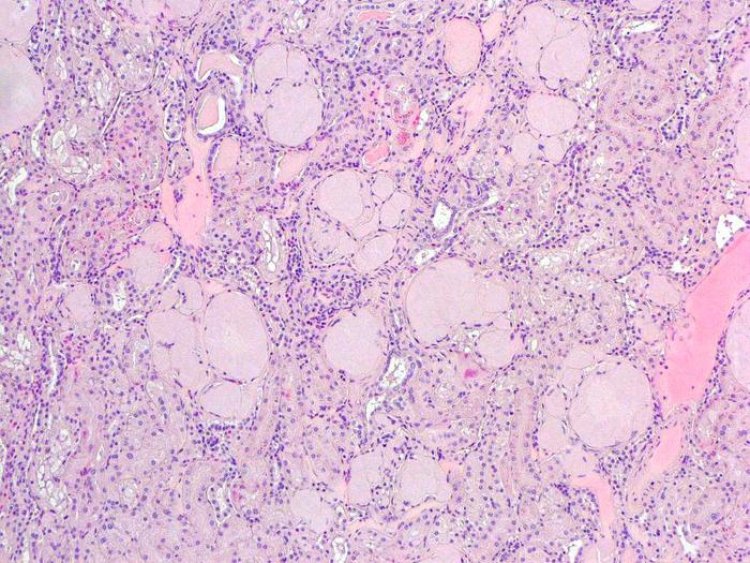Japanese squirrels develop human hereditary diseases with ageing: Research

Tokyo, Japan: A team led by Dr Tomoaki Murakami of the Tokyo University of Agriculture and Technology discovered that fibrinogen A-chain amyloidosis, a previously unknown disease in animals other than humans, is common in Japanese squirrels (Sciurus lis). They compared the pathology of Japanese squirrels to that of humans in this work, and they emphasised the importance of Japanese squirrels in the comparative pathological investigation of fibrinogen A-chain amyloidosis.
The researchers published their results on August 8th in the Journal of Pathology.
Amyloidosis is a disease group in which amyloid, generated by misfolding of host proteins, deposits in several organs. Fibrinogen Aα-chain amyloidosis is an inherited disorder in which fibrinogen Aα-chain, a protein involved in blood coagulation, becomes amyloid and deposits in the renal glomeruli, resulting in renal failure. The disease was first reported in 1993, but a definitive treatment has not been established due to the small number of patients and many unknowns about the pathogenesis. In this study, they found that fibrinogen Aα-chain amyloidosis occurs extremely frequently in Japanese squirrels, and compared the pathogenesis of this disease with that in humans.
The research team first conducted histopathological analysis on the whole body organs of a total of 38 captive Japanese squirrels that died at five zoos in Japan between 2018 and 2022, and found that 29 cases (76.3%) had suffered systemic amyloidosis characterized by severe glomerular amyloid deposition. "I was amazed because it is rare to see such a high incidence of amyloidosis in one animal species," said Susumu Iwaide, the first author and a graduate student in Laboratory of Veterinary Toxicology at TUAT. They performed mass spectrometry-based proteomic analysis and immunohistochemistry, and identified fibrinogen Aα-chain as a precursor protein. "Interestingly, amyloid exclusively deposited in the glomeruli but not in the tubulointerstitium in the affected kidney, which is same as the human condition," said Iwaide.
Further analysis using mass spectrometry found that approximately 100 amino acids in the C-terminal region of the fibrinogen Aα-chain accumulate in amyloid deposits, which coincides with human disease. Gene analysis revealed no mutations in the amyloid-forming region between amyloidosis-affected and non-affected squirrels. Statistically, there was a significant association between the development of amyloidosis and aging. In addition, some affected individuals were close descendants of wild-protected squirrels. "We concluded that the reduced genetic diversity due to breeding in the zoo does not cause fibrinogen Aα-chain amyloidosis in Japanese squirrels, but an age-related disease inherent to the species," said Iwaide.
In human fibrinogen Aα-chain amyloidosis, mutations exist in the gene of the amyloid-forming region in individuals who develop the disease, leading to the change of the amino acid sequence. This indicates that the amino acid sequence of the C-terminal region of the fibrinogen Aα-chain is important for maintaining protein stability. Considering that the amyloid deposition pattern in the kidneys of Japanese squirrels was identical to that of human disease, fibrinogen Aα-chain seems to have a common mechanism of amyloid formation across animal species.
"The study of animal diseases is important not only for maintaining the health of wildlife and pets, but also for a better understanding of human pathology. Since fibrinogen Aα-chain amyloidosis in Japanese squirrels occurs at a very high frequency, we want to elucidate why Japanese squirrels are susceptible to fibrinogen Aα-chain amyloidosis in detail to develop treatments for the incurable human disease, as well as to maintain the health of Japanese squirrels," Iwaide added.















































